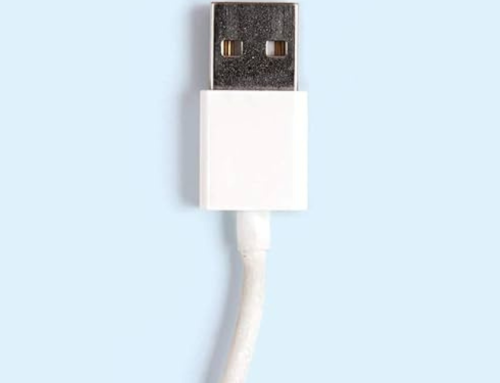
Eye Movement Desensitization and Reprocessing (EMDR) therapy has emerged as a powerful tool for addressing trauma and its associated symptoms. This unique approach integrates elements of talk therapy with bilateral stimulation, typically eye movements, to help individuals reprocess distressing memories and move towards healing. However, a recent development within EMDR has sparked debate: the use of specialized equipment for delivering bilateral stimulation. Let’s talk about differences between traditional EMDR methods and those incorporating equipment, examining their potential benefits and drawbacks, and ultimately questioning whether “EMDR vs. Traditional Therapies” becomes obsolete in the face of technological advancements.
Traditional EMDR: Core Principles and Methods
At the heart of traditional EMDR lies a six-phase protocol designed to guide clients through the reprocessing journey. Initially, the therapist establishes a safe and supportive environment, building trust and rapport. They then identify a specific target memory and associated negative beliefs and emotions. During the reprocessing phase, the therapist guides the client in focusing on the memory while simultaneously providing bilateral stimulation through various methods. These methods can range from therapist-directed hand movements to tapping sounds to simple side-to-side eye movements. Throughout this process, the client reports changes in thoughts, feelings, and body sensations, indicating the memory’s emotional charge is shifting. The therapist supports the client in processing these changes and integrating adaptive coping mechanisms. The final phases focus on consolidating positive gains and generalizing them to other areas of life.
The Rise of EMDR Equipment: Technological Interference or Enhanced Reprocessing?
While traditional EMDR methods rely on therapist-delivered stimulation, recent years have witnessed the introduction of various technological tools. These tools, ranging from light bars to virtual reality headsets, deliver precisely controlled bilateral stimulation, often incorporating visual, auditory, or tactile elements. Proponents of equipment-based EMDR argue that it offers several advantages:
- Consistency and Precision: Advocates claim that equipment ensures consistent and precise stimulation regardless of therapist fatigue or skill level, potentially enhancing its therapeutic effect.
- Reduced Therapist Fatigue: With equipment handling stimulation, therapists can focus on guiding the client through the emotional processing, potentially leading to longer and more focused sessions.
- Engaging Stimulation: Advanced equipment creates interactive and immersive experiences that some clients find more engaging and less tiring than basic eye movements.
EMDR vs. Traditional Therapies: Seeking the Optimal Approach
While research on the efficacy of equipment-based EMDR is ongoing, conclusive evidence to declare it superior to traditional methods remains elusive. Some studies suggest potential benefits, but direct comparisons are often hampered by methodological limitations. Ultimately, the “EMDR vs. Traditional Therapies” debate seems less about equipment itself and more about finding the approach that best serves each individual client and their unique needs.
Beyond the Binary: Tailoring the Approach to Individual Needs
Instead of viewing “EMDR vs. Traditional Therapies” as a rigid dichotomy, consider a more nuanced approach:
- Client Preference: Individual preferences matter. Some clients might find traditional methods more comfortable, while others may respond better to the engaging nature of equipment. Allowing clients to choose based on personal preference can enhance engagement and outcomes.
- Therapist Competence: Regardless of the method, therapist training and competence are crucial. Therapists skilled in both traditional and equipment-based methods can offer flexibility and tailor the approach to each client.
- Clinical Complexity: For complex cases or clients with limited resources, traditional methods may offer a more accessible and adaptable choice. In other situations, equipment may enhance engagement and expedite progress.
The “EMDR vs. Traditional Therapies” debate ultimately misses the mark. Rather than viewing them as competing entities, we should recognize that both traditional and equipment-based methods can be valuable tools in the EMDR toolbox. By prioritizing client needs, therapist expertise, and clinical context, we can move beyond the binary and harness the strengths of each approach to offer the most effective and accessible treatment for all. After all, the true success of EMDR lies not in the method itself, but in its ability to guide individuals towards healing and a brighter future.
Share This Story, Choose Your Platform!
The Best Address for EMDR Equipments: emdrtech
emdrtech stands at the forefront of the industry, offering cutting-edge solutions and equipment for EMDR therapy. Our aim is to empower therapists with the tools they need to administer highly efficient and readily available treatments to their clients.
For those practicing EMDR therapy, we urge you to explore the ways in which emdrtech can enhance your profession. Take a moment to visit our website, where you can peruse our extensive range of products and services, and delve into our unwavering dedication to pushing the boundaries of innovation!
While MAT and DAT models provide auditory-vibration bilateral stimulation, the upper-segment model ATV comes with a multicolor LED bar and provides triple stimulation functions including visual, auditory, and vibration.
You can find all kinds of information about emdrtech devices, which are developed with the joint initiative of expert engineers and EMDR therapists, on our product introduction pages.
For information EMDR equipments, you can contact us at info@emdrtech.com or through our WhatsApp contact line at +90 (507) 107 31 11.






